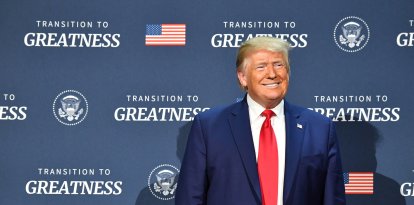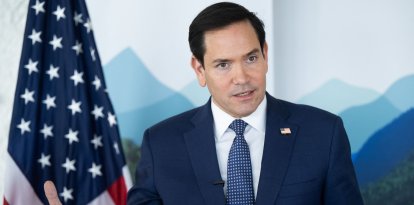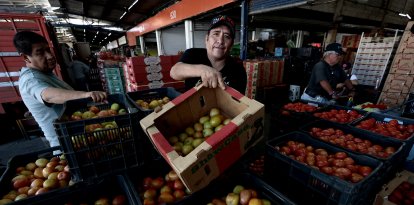Since 2016, 10 states have seen more foreigners naturalized than the difference in votes between parties
The National Association for New Americans wants to reach 2 million citizens a year from abroad.

(Cordon Press)
Of those who have naturalized since 2016, 5.16 million will be eligible to vote in November. The state where the number of new citizens has increased the most is California, with 733,756 people. It is followed by Florida and New York, with 429,017 and 402,904 people respectively, and very close behind by Texas, with 343,799.
America is a welcoming country, capable of welcoming immigrants of different origins and offering them the opportunity to progress and become part of the community in which they settle. Some of these immigrants stay for a long period, or on a permanent basis, and many seek to become full citizens.
This whole process has economic, social and political consequences. The National Partnership for New Americans (NPNA) has produced a report to gauge the impact that the turnout of nearly 5.2 million new voters from overseas may have on the November 8 midterm elections.
"Citizens of color"
The report does not make the leap of calculating the voting direction of each ethnic group. However, Nancy Flores, deputy director of the NPNA, points out that the origin of each ethnic group is very important. And, in an interview with City Limits, he points out that "more than 90% of the new citizens are of color."
The report shows that more than 80% of new voters come from the Americas or Asia. But there is a significant contribution from Africa, a continent that contributes almost another 10%.
On the other hand, the report highlights that more than half of the new Americans (55.5%) are women. The percentage of women is higher in the older age brackets, while in the 18 to 19 age bracket they account for 51.2%. By age bracket, those between 18 and 34 (31.7%), between 35 and 49 (36.9%), and those over 50 (32.3) are practically divided by thirds.
The goal of the association is what they call New American Majority, which would be the confluence of three social realities: "young people, people of color and single women". Although not explicitly stated, the purpose is to form an electoral coalition that will grant a permanent majority to the Democratic Party.
Ten decisive states
The report focuses on ten states in which population increases due to foreign naturalization may have a significant impact on elections. Those 10 states are Georgia, Arizona, Nevada, Pennsylvania, Florida, North Carolina, Wisconsin, Texas, Michigan and Virginia. If some states, such as California or New York, are not on this list, it is because the advantage of the winning party (in this case the Democratic Party) is so high that the arrival of new foreign-born voters cannot swing the vote.
Nancy Flores places special emphasis on Georgia. "It was a super-Republican, Southern state where a Democratic candidate was never going to win," he says, but where Stacey Abrams is gaining popularity. Flores impacts that, for example, the number of Africans who naturalized since 2016 is greater "than the difference by which the last election was won." The election was won by candidate Biden.
The NPNA director criticized those who put forward the "great replacement theory" as false. And he posits that the influx of new foreign-born Americans "of color" will give the Democratic Party a safe majority. Thus, the report points out that the number of New Mexicans in Arizona, or Hispanics in Nevada or Florida exceeds the voting difference between the two parties.
The Hispanic mystery
The report implicitly and Nancy Flores explicitly errs in making a correlation between new voters and Democratic voters. Nancy Flores optimism clashes with the reality of the Hispanic voter who is increasingly becoming independent of the Democratic Party. Flores herself does not find a reason for this shift to the Republican Party, which is slow but so far has not stopped. Flores limits himself to saying that the majority is still Democrat. And he acknowledges that in Florida, the Republican Party offers Hispanics "citizenship services for individuals, focusing on Cubans and Venezuelans."
The truth is that it is difficult to speak in general terms of a "Hispanic vote." Beyond the Spanish cultural heritage, of which the language is the most prominent, there are Hispanics from different countries, with different races, religions and different economic situations or educational levels.
Despite these differences, there is a common trend: what was an inexhaustible and growing source of votes for the Democratic Party seems to be changing. In 2016, 29% of Hispanics voted for Trump. In 2020 it was 37%, according to The Economist. This growing independence of the Hispanic vote has also been observed by the specialized data analysis media FiveThirtyEight.
One in ten voters
According to the Pew Research Center, 9.8% of voters in the 2020 election were naturalized Americans, nearly twice as many (a 93% increase) as in 2000. On the other hand, 13.9% of the people who live in the country are immigrants. Nancy Flores, in the interview granted to City Limits, says that "in a good year" 600,000 to 700,000 foreigners are naturalized. "We want to reach two million," he said.
RECOMMENDATION





















